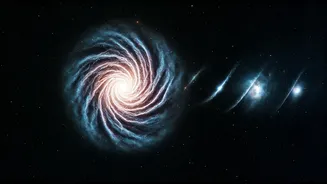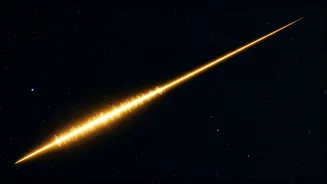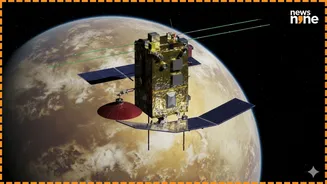The Viral Signal
The heart of the online discussion centers on the assertion that the 3I/ATLAS project emitted a distinctive 'Fibonacci Signal.' This signal was described
as a series of pulses at a frequency of 1420 MHz, following a pattern: 8 • 13 • 8 • 5 • 13 • 8. The specific arrangement of these numbers, echoing the Fibonacci sequence's inherent mathematical properties, has captured the imagination of many. The claim proposes that this configuration is not accidental, prompting discussions on potential deliberate messaging or a form of communication from the project. This specific sequence and its purported link to the Fibonacci series have become central to the debate and speculation surrounding the 3I/ATLAS project, leading to wider investigations into its source.
Fibonacci Sequence Explained
The Fibonacci sequence is a fundamental mathematical concept where each number is the sum of the two preceding ones. Starting with 0 and 1, the series unfolds as follows: 0, 1, 1, 2, 3, 5, 8, 13, and so on. This sequence appears surprisingly frequently in nature, from the arrangement of leaves on a stem to the spiral patterns of seashells and galaxies. Its presence in natural phenomena has made it a subject of fascination. The sequence's mathematical elegance and prevalence in nature have sparked its use in multiple areas like art, architecture, and, now, the interpretation of signals from scientific projects. In this context, the presence of the Fibonacci sequence is an important part of the discussions around 3I/ATAS.
1420 MHz Decoding
The frequency of 1420 MHz, crucial to the signal's interpretation, holds significance in radio astronomy. This frequency is associated with the 'hydrogen line,' a characteristic emission of neutral hydrogen atoms. Because hydrogen is the most abundant element in the universe, the hydrogen line serves as a key marker for astronomical observations. It's often used by researchers to analyze the distribution of hydrogen clouds and explore the cosmos. The choice of 1420 MHz, therefore, raises questions regarding the signal's purpose and possible significance within a broader cosmic context. The debate has focused on whether the frequency was chosen coincidentally or was purposely chosen as a way to send some kind of information.
Decoding the Claim
The core of the viral claim rests upon decoding the pattern in the alleged signal from 3I/ATLAS. The numbers 8, 13, and 5 have links to the Fibonacci sequence. People are speculating on what this series might mean in a message. This decoding process involves analyzing each pulse, and their relative durations or intervals, attempting to discern any embedded information. Different interpretations have emerged: some believe it's a form of interstellar communication, whereas others treat it as random data. This process has led to a number of competing theories, as well as several people attempting to decipher the pattern and extract any potential underlying messages. The result is a flurry of online speculation.
Controversies and Skepticism
The claim has generated considerable controversy, with many expressing skepticism. Critics have pointed out the difficulties in definitively verifying the signal's origin and intention. They also emphasize the need for rigorous analysis to rule out coincidences or noise. The issue of bias, and how pre-existing beliefs can influence interpretations, is also something that's being discussed. The debate involves discussions about the possibility of confirmation bias, where individuals might selectively seek out information. The skepticism surrounding the claim underscores the importance of scientific validation and rigorous data analysis before drawing conclusions. Many are waiting for more verification, and more clarity about the signal before fully trusting the message.
Impact and Future
The viral discussion about 3I/ATLAS highlights the interplay between scientific discovery and public interest. The debate illustrates how data, especially in the realm of science and technology, can quickly become a matter of public attention. Whether the claim is valid or not, it sparks a vital conversation about scientific communication, the potential for discovery, and the public's understanding of complex concepts. The incident also serves as a reminder to be discerning when evaluating information encountered online. The future of this debate may involve more data, independent verification, and a more thorough scientific investigation. It highlights the dynamic relationship between scientific pursuits and public dialogue, where collaboration and skepticism play vital roles.











